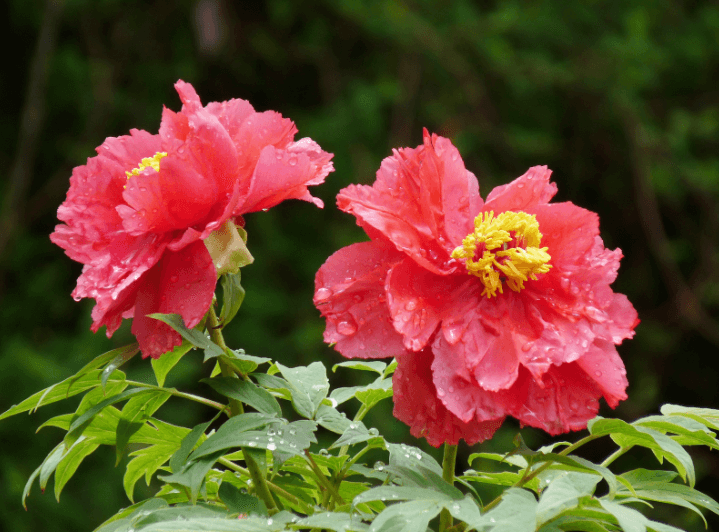
Common Name Chinese Red Peony,Crimson Peony,Red Garden Peony
Family Name Paeoniaceae
Parts Used Roots,Flowers
Herbal Actions Anti-inflammatory, Analgesic, Sedative, Antispasmodic, Blood Tonic
Health Benefits Pain Relief, Skin Care, Blood Circulation, Relaxation, Immune Support
What are the Benefits of Red peony?
Vivid, deep crimson red peony flowers have been cherished through the ages in Traditional Chinese Medicine (TCM) as a powerful tonic for the blood, promoting circulation and calming the liver. Energetically, this herb is recognized as a cooling agent that is bitter in taste and soothing in effect. It is a fundamental herb in TCM, often used to harmonize the liver and spleen and to alleviate pain.
Containing active compounds like paeoniflorin and albiflorin, red peony roots act as potent anti-inflammatories and antioxidants, which support the body’s healing processes.* Renowned as a “beauty herb,” its properties are thought to enhance skin health by reducing inflammation and clearing heat from the body. This makes it a popular ingredient not just in medicinal formulas, but also in beauty products and supplements.
This rich medicinal profile explains why red peony is highly valued not only in health treatments but also in everyday wellness practices, included in teas, supplements, and even topical creams and ointments, aiming to enhance both health and beauty by leveraging its profound therapeutic benefits.
Historical Use of Red peony
Red peony has long held a revered place in Traditional Chinese Medicine (TCM) and other Asian cultural traditions, symbolizing wealth and honor while being believed to house protective and healing spirits. According to classical texts like the "Shennong Bencao Jing," red peony roots are esteemed not only for their medical efficacy but also for their spiritual significance in cleansing and protecting from negative influences.
The roots of red peony were commonly used in spiritual ceremonies to promote healing and balance within the body, reflecting their deep cultural and medicinal importance. In TCM, red peony is considered a powerful blood tonic, believed to nurture the body and spirit, thus maintaining harmony and health.
Furthermore, red peony has been used in decorative arts, particularly in Chinese painting and fabric design, symbolizing beauty and peace. The vibrant red petals are often depicted in traditional garments and scrolls, representing prosperity and protection. This multifaceted use of red peony, both medicinally and culturally, underscores its enduring significance across centuries, linking the physical and spiritual well-being of individuals and communities.
Botanical Description & Habitat
Red peony, known scientifically as Paeonia lactiflora 'Red', is a perennial plant renowned for its large, showy flowers. The plant typically grows to about 60-90 cm (2-3 feet) in height. The leaves are deeply lobed, green, and glossy, providing a lush backdrop to the striking flowers. The blooms are large and rounded, usually appearing in late spring to early summer. The petals are deep red, often with a slightly darker center, and they surround a cluster of yellow stamens, creating a vivid contrast.
Red peony is native to East Asia, particularly China, where it thrives in the regions that provide the cool temperatures and moist conditions it prefers. It is commonly found in meadows and mountain slopes where the soil is rich and well-drained. The plant is cold-hardy and requires a period of winter chill to thrive and bloom profusely.
Cultivation of red peony has spread to various parts of the world, particularly in temperate regions where gardeners value it for its ornamental beauty and ease of care. It is frequently found in botanical gardens and personal gardens, where it is used in borders, as a specimen plant, or in mass plantings to create dramatic spring displays.
In its native and cultivated habitats, red peony does best in full sun to partial shade and benefits from protection from strong winds and extreme heat, which can damage the blooms. Proper care in suitable climates allows this plant to thrive and contribute its stunning floral beauty to the landscape.

